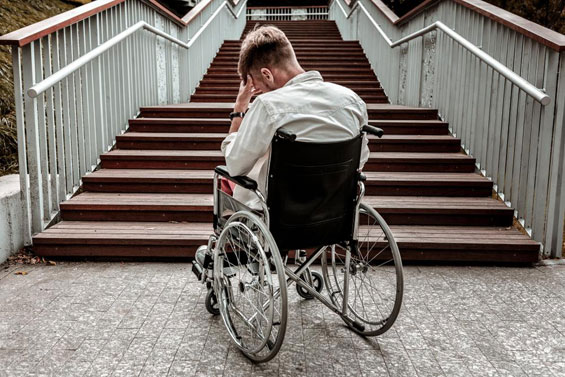Paralysis is when an individual cannot move some part of their body because of a spinal cord injury. Over 1.2 million Americans are living with paralysis resulting from Spinal cord injuries are most commonly caused by car accidents, followed by sports-related injuries, falls and acts of violence. As the number of people living with paralysis rise and as they age with the injury, the costs associated with treating them increase. Each year, paralysis costs the healthcare system billions of dollars.

Paralysis is caused by damage to the nerves in the spinal cord, which disrupts signals to areas of the body, and results in paralysis. It can be temporary or permanent depending upon the force of impact and location of the injury. If it is an incomplete injury to the spinal, the person may still have some sensation or function. When there is complete nerve damage, the injured party feels nothing and cannot doing anything with the effected body part. Many types of paralysis can fit into four main categories.
With spinal cord injuries, there is currently no cure for the paralysis itself. In certain cases, however, there can be improvements overtime or with intensive therapy including, physical therapy, occupational therapy and speech therapy. Depending upon the severity additional modalities may become necessary such as mobilities aids, adaptive equipment or other supportive devices to assist with functionality.
Medication can be used as well to treat symptoms as they arise including phantom pain, infections, to prevent blood clots, or even reduce spinal swelling and water retention. In addition, there are surgical options available depending upon the injury that can help relieve some symptoms and/or restore some functionality such as brachial plexus reconstruction, nerve reconstruction, or nerve transplantation. Most paralysis, however, requires lifelong care and treatment to address the physical, cognitive, emotional and function losses following a spinal cord injury.

Accidents happen in a moment and leave the victim with an avalanche of limitations, losses, medical expenses, a global loss of quality of life. Paralysis injuries are the pinnacle of catastrophic losses leaving a victim in a wake of misery and despair.
If paralysis was suffered due to someone else’s fault, whether by car accident or product failure, an attorney who specializes in these injuries will work zealously to identify all responsible parties, develop precise theories of fault against each responsible entity or individual, and seek the maxim recovery permitted by law against these individuals for your loss. In conjunction, our firm will coordinate and execute a comprehensive plan to address the paralysis deficits with in coloration with qualified medical professionals, diagnostic studies, case managers, social workers, life care planners, vocational counselors, or any other professional or services necessary to get back some of what was taken. Give us a call to see what we can do to help you in your time of need.
